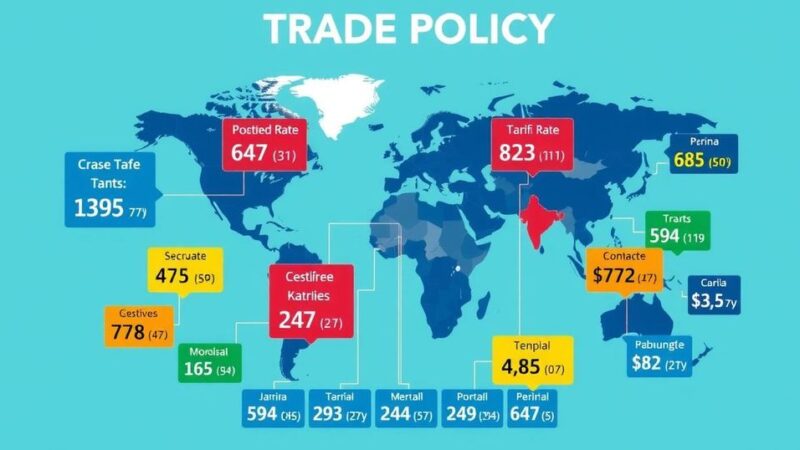Morocco’s central bank reduced its benchmark interest rate by 25 bps to 2.25%, targeting growth and job creation. Inflation is expected to remain moderate at 2% amid uncertainty due to geopolitical tensions. Economic growth forecasts at 3.9% this year, with a projected widening current account deficit and a decrease in fiscal deficits from higher tax revenues.
On Tuesday, Morocco’s central bank announced a reduction in its benchmark interest rate by 25 basis points to a new low of 2.25%. This marks the second consecutive cut, aimed at aligning with inflation forecasts while fostering growth and job creation. The recent monetary easing, initiated in June, seeks to support ongoing infrastructure investments as Morocco prepares to be a co-host for the 2030 World Cup.
The bank projects that inflation, primarily influenced by food prices, will stabilize at a moderate rate of 2% throughout this year and the next. This prediction, however, faces uncertainties stemming from geopolitical tensions and the potential impact of a prolonged drought on the agricultural sector.
Anticipated improvements in non-farming activities are expected to propel Morocco’s economic growth to 3.9% this year, a rise from the previous year’s 3.2%. The country’s grain harvest is projected to reach 3.5 million tonnes, slightly exceeding last year’s yield of 3.12 million tonnes, although remaining below the average.
With imports surpassing exports, Morocco’s current account deficit is expected to widen to 2.9% of GDP this year, up from 1% in 2024. Looking ahead, foreign exchange reserves are forecasted to reach 391.8 billion dirhams ($40.5 billion) by the end of 2025, sufficient to cover 5.5 months’ worth of imports.
Additionally, increases in tax revenues are anticipated to help mitigate the fiscal deficit, which the bank projects will decrease to 3.9% of GDP in 2025 and further to 3.6% in 2026, down from 4.1% last year.
In summary, Morocco’s central bank has cut its key interest rate by 25 basis points to stimulate growth amidst moderate inflation projections. The economic outlook reflects a potential growth rate of 3.9% supported by an uptick in non-farming activities. However, uncertainties related to inflation and agricultural production due to geopolitical issues and drought persist, alongside a widening current account deficit. Future fiscal strategies aim to reduce deficits through enhanced tax revenues.
Original Source: www.tradingview.com






